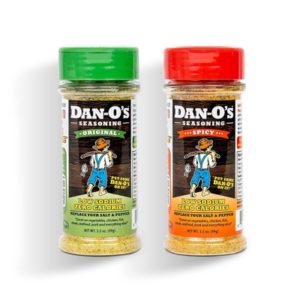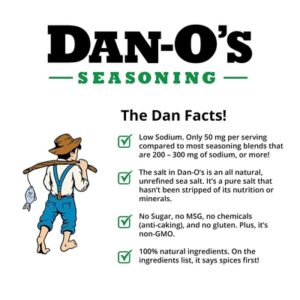Low Sodium Diabetic Diet
Upon being diagnosed with diabetes, one of the main concerns is probably how you’ll control your carbs intake. However, there is another nutrient that every type 2 diabetes patient should take into consideration: sodium.
What is the relationship between diabetes and sodium?
Sodium is an important electrolyte that helps regulate fluid balance in the body and ensure proper nerve and muscle function. However, data from the CDC (Centers for Disease Control and Prevention) shows that 89% of adults are getting too much salt.
When the body is unable to get rid of the excess salt, it can lead to various complications including high blood pressure, one of the main risk factors for heart disease.
Diabetes and cardiovascular disease

This can be attributed to the fact that type 2 diabetes patients are typically more prone to heart disease due to risk factors such as having “bad” or LDL cholesterol, living a sedentary lifestyle, carrying excess weight, and having high blood pressure.
How much salt should you eat when you have diabetes?
Salt contains 40% sodium and 60% chloride. Therefore, limiting your salt intake plays a big role in lowering your sodium intake and thus your risk of heart disease and high blood pressure. The American Diabetes Association (ADA) recommends diabetes patients limit their intake of sodium to 2,300 mg (1 teaspoon of salt) daily.
Lowering your intake even further to just 1,000 mg per day helps blood pressure. However, recommendations may vary per person and it’s therefore important to consult your physician to find out which sodium intake limit would work best for you.
According to a study published in the Journal Circulation in May 2017, 70% of sodium is found in processed and restaurant food. Therefore, the best way to cut back on sodium intake is to avoid processed food and limit the number of times you dine out each week.
Shopping can be daunting at first. However, after the first few visits spent making comparisons, it will be a breeze. It is particularly important to keep in mind that sodium can hide in surprising places, such as packaged oatmeal, bread, and certain condiments. Therefore, your dietitian or doctor may ask you to avoid or limit high salt foods such as:
- Salt seasonings (seasoned salt)
- Canned meats
- Processed or cured foods
- Boxed mixes of pasta, rice or potatoes
- Canned vegetables and soups (with sodium)
- Salad dressing, mustard, ketchup, canned sauces, and other spreads
- Pickled foods
- Packaged gravies, sauces, or soups
- Salty snack foods
- Olives
- Processed meats: sausage, ham, bacon, and lunch meat.
- Steak and soy sauces
- MSG (monosodium glutamate) which is commonly found in Chinese food
Tips for low sodium diabetes diet
If you have been diagnosed with diabetes, these low-salt cooking tips will help you limit your sodium intake:
- Go for fresh foods or ingredients with no added salt
- Try pineapple or orange juice as the main base for marinades
- For favorite recipes, decrease or delete the salt you normally add or simply use other ingredients.
- Avoid canned vegetables, soups, and entrees; rice and pasta mixes; instant cereal; frozen dinners; and gravy, sauces, and pudding mixes.
- Use frozen entrees that contain less than 600mg of sodium per serving. Be sure to check nutrition fact labels on packages for sodium content.
- Use frozen, fresh, or canned vegetables with no added salt.
- Opt for canned soups with low sodium content.
- Avoid spice blends and mixed seasonings that contain garlic salt and other salts.
The body adjusts fast and after about 2 weeks you’ll not miss added salt in your food.
Which seasonings can you use to replace salt?
Some of the spices and herbs you can use to improve natural flavors in your diet include:
- Cinnamon
- Basil
- Chives
- Cumin
- Celery seeds
- Cocoa powder
- Chili powder
- Garlic and garlic powder
- Dill
- Flavoring extracts (almond, vanilla, etc.)
- Curry
- Lime or lemon juice
- Mint
- Nutmeg
- Marjoram
- Paprika
- Onion powder
- No-salt seasoning blends
- Pepper
- Rosemary
- Thyme
- Sage
- parsley
- Pimiento
- Savory
- Paprika
According to research published in the October 2014 issue of The Journal of Clinical Endocrinology and Metabolism, people with type 2 diabetes who had the highest intake of salt increased their risk of heart disease by up to 200% compared with patients who consumed the lowest amount.
The researchers concluded that limiting sodium intake goes a long way in preventing the complications of type 2 diabetes.



